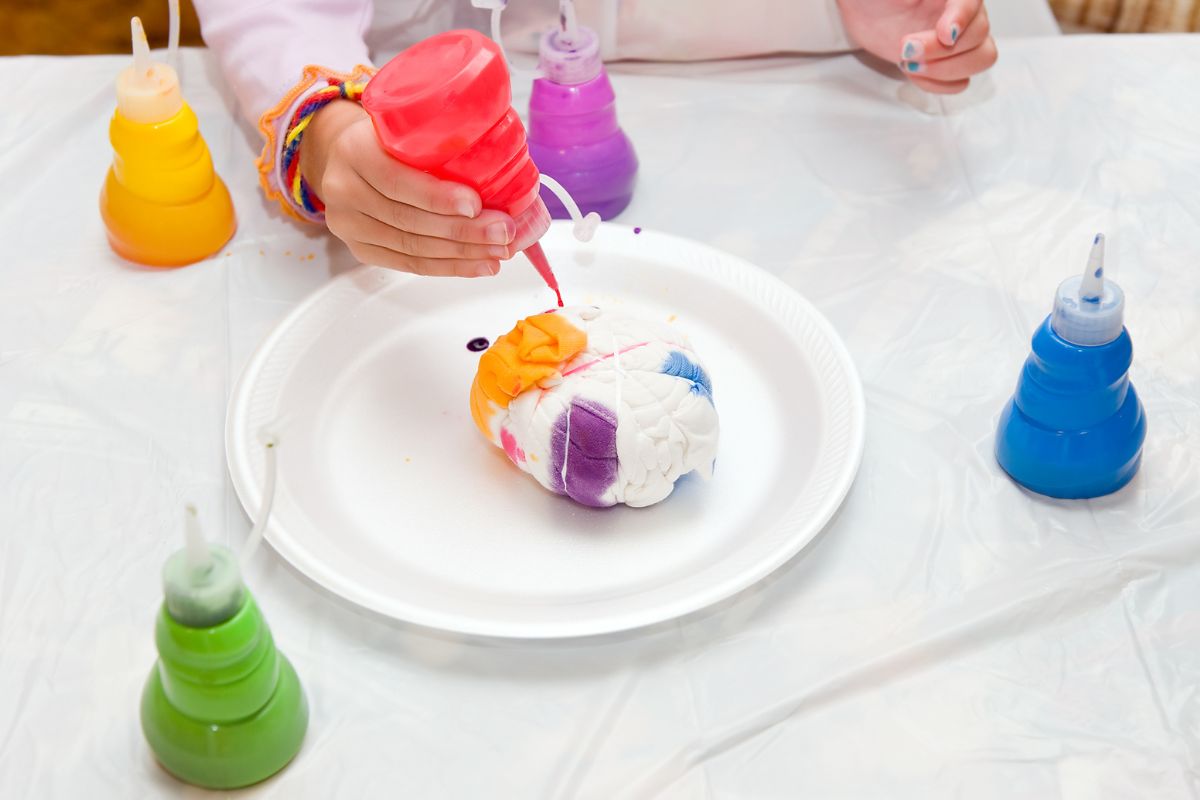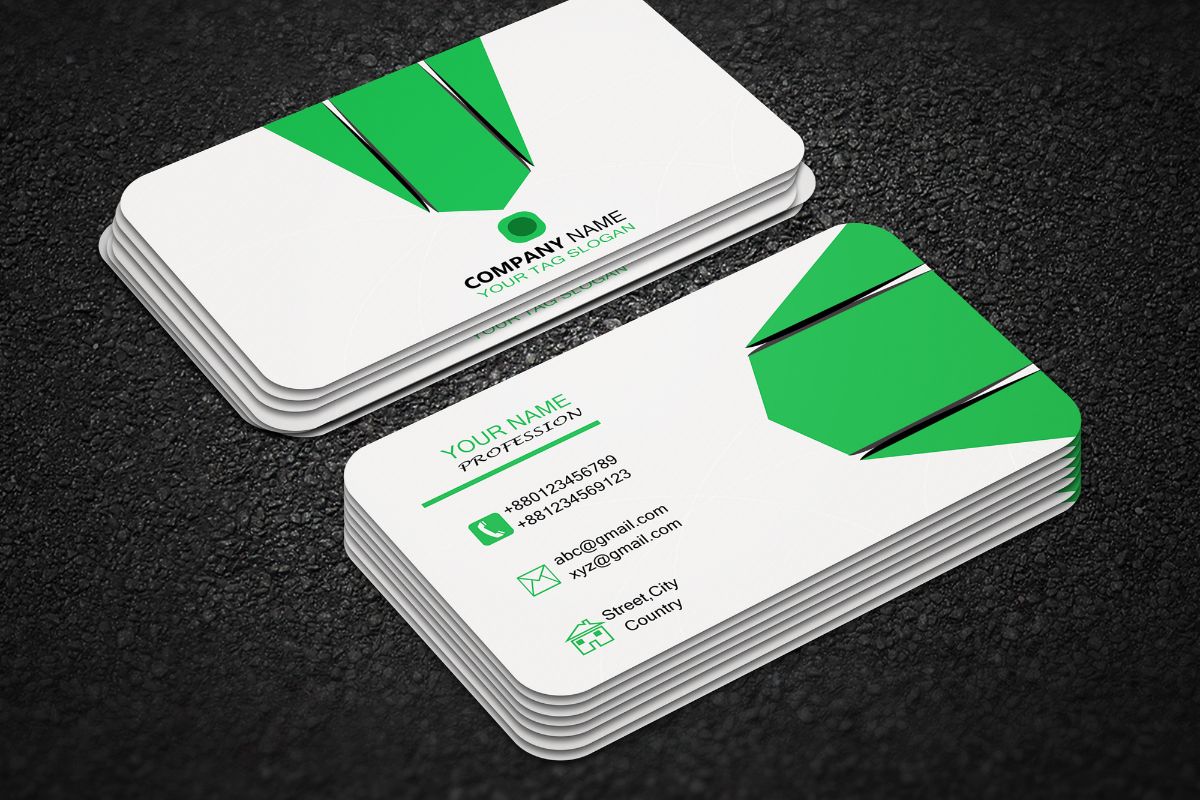Exploring the vibrant world of tie-dye is an exhilarating journey into the art of combining color to create unique patterns and designs. This craft allows you to express your creativity through various dyeing techniques, including folding, twisting, and crumpling fabric to produce distinct styles that cater to both traditional and contemporary tastes. As you start on your tie-dye adventure, it’s important to understand the interplay of colors, as well as how to select and blend hues to achieve the desired effect on your fabric.
When considering tie-dye color combinations, you have a plethora of options, ranging from harmonious gradients to striking contrasts. Beginning with primary colors and then introducing secondary and tertiary shades gives you the freedom to craft a palette that’s as bold or as subdued as you wish. The key is practice and experimentation; over time, you will develop an eye for which colors work well together and how they react on different materials, enhancing your overall technique.
As you grow in your tie-dye practice, you’ll notice that certain combinations resonate with you more. Whether you’re crafting a personal item or creating art pieces for others to enjoy, remember that each piece is unique. The variations in the dyeing process ensure that every creation is one of a kind, much like a signature. With a confident grasp of the basics, you’re well-equipped to push the boundaries of this timeless art form and make your mark in the world of arts and crafts.
Understanding Color Theory
Color theory is a critical foundation for creating visually appealing tie-dye patterns. By understanding the relationships between colors, you can create designs that are vibrant, harmonious, and emotionally resonant.
Primary and Secondary Colors
Primary colors—red, blue, and yellow—cannot be created through the combination of other colors. They form the basis of the color wheel, a tool essential to color theory that explicates color relationships. By mixing primary colors, you produce secondary colors: green from blue and yellow, orange from red and yellow, and purple from blue and red.
Tertiary and Complementary Colors
Tertiary colors result from mixing a primary color with a secondary color and reside between them on the color wheel, such as red-orange or yellow-green. Complementary colors, on the other hand, are opposites on the color wheel, like blue and orange. They create high contrast and vibrant color when paired, making them perfect for bold tie-dye designs that stand out.
The Importance of Contrast and Vibrancy
Contrast is a cornerstone of tie-dye that accentuates differences in hue, leading to designs that catch the eye. Vibrant colors contrast well with both neutrals and complementary colors, invoking a sense of energy and movement ideal for summer camp clothing or fashion trend statement pieces that exemplify individuality.
Shades, Tints, and Neutral Colors
Adding black to a color produces a shade, while adding white creates a tint. Mixing a color with gray or combining all three primary colors typically results in neutral colors, which can balance out more vibrant colors in your tie-dye design, providing a sophisticated look.
Color Theory in Fashion
In fashion, utilizing color theory allows for the creation of looks that can range from psychadelic to subtle. By understanding which color combinations resonate, fashion designers exert control over the aesthetic and emotional impact of their garments, reflecting cultural shifts and individual personality.
Historical Significance
Color mixing and the use of vibrant colors have historical roots in many cultures; notably, Japan is renowned for its traditional dyeing techniques that produce intricate, multi-colored patterns. These historical practices contribute to the broader understanding of color theory and its application in modern-day DIY projects and commercial fashion alike.
Preparing to Tie Dye
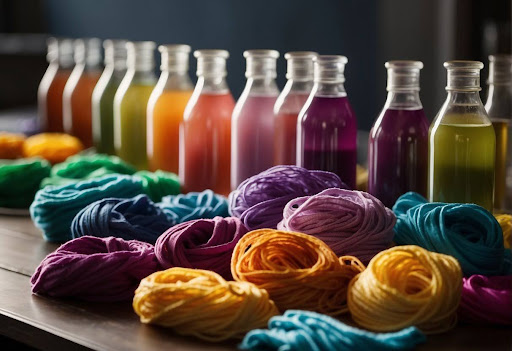
Before embarking on your tie-dye project, it’s essential to select appropriate fabrics and dyes, organize your workspace, understand color placement, and have practical know-how. This foundation will ensure vibrant results and an enjoyable crafting experience.
Selecting Fabrics and Dyes
When choosing fabric, opt for natural fibers like cotton, linen, or silk for optimal dye absorption. Fiber reactive dyes are ideal as they form a covalent bond with the fiber, promising lasting vibrancy. Quality dyes can make a significant difference; famed for their brightness and resistance to fading, they elevate the final look of your tie-dye project.
Setting Up Your Workspace
Prepare a clean, spacious area to work in. Cover surfaces with plastic sheets or garbage bags to protect against stains. Have all your tie-dye supplies within reach: dyes, squeeze bottles, rubber bands, gloves, plastic wrap, and a basin of vinegar for setting the dye if required. Proper setup prevents mishaps and streamlines your creative process.
Understanding Color Placement
Color placement is crucial to tie-dyeing. Consider the color wheel when combining hues to prevent muddy colors. Strategically applying darker colors beside lighter ones can enhance contrast. Careful planning of where and how to apply your fabric dye will yield more controlled and striking patterns.
Practical Tips for Beginners
If it’s your first time tie-dyeing, start simple. Practice with smaller items and experiment with basic techniques like the spiral or bullseye to gain confidence. Remember, practice leads to improvement; don’t be disheartened by imperfect outcomes. Each piece is unique, and the process is part of the fun.
Exploring Tie Dye Color Combinations
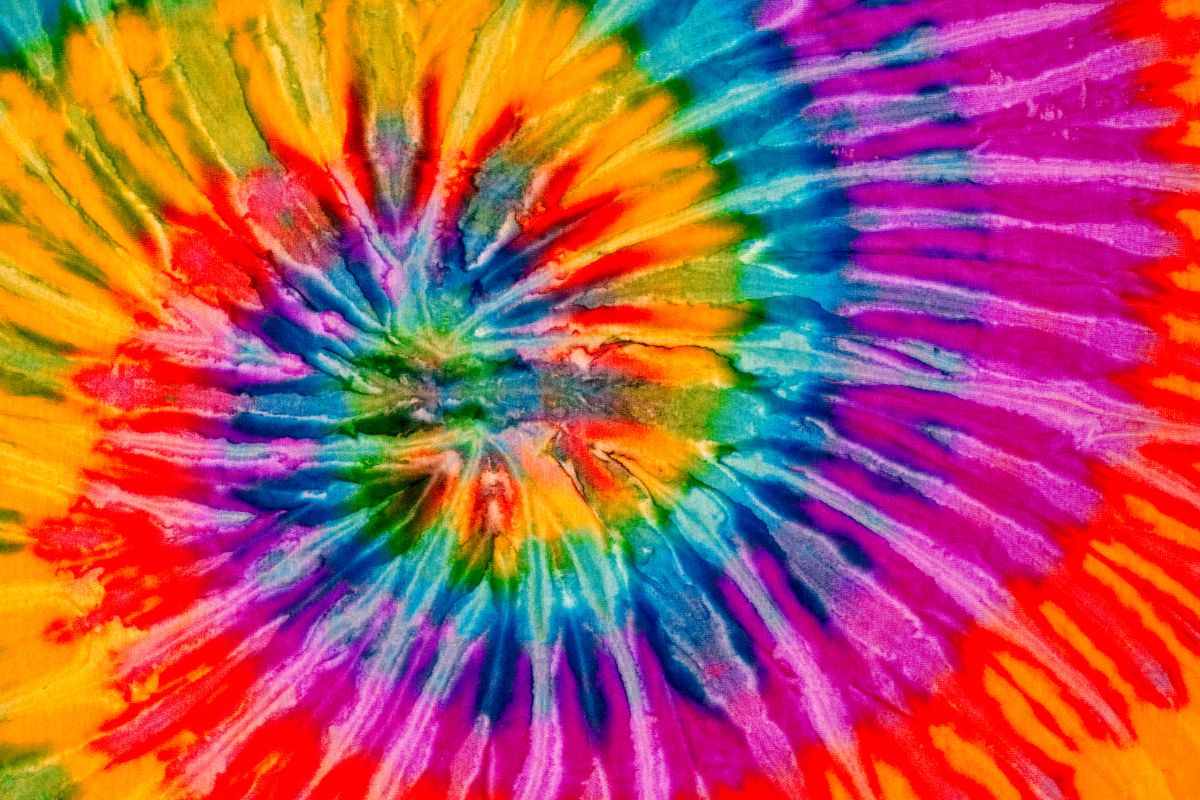
When you begin your tie-dye project, understanding how different colors interact can greatly affect the outcome of your designs. The mastery of color combinations will enable you to create anything from subtle earthy tones to vibrant, eye-catching patterns.
Utilizing Primary Colors
Primary colors are the foundation of all other colors. In tie-dye, using blue, red, and yellow can produce bold and striking patterns. To maintain intensity, space these colors apart in your design to avoid muddying.
- Blue: Calm, cool, and collected
- Red: Bold and passionate
- Yellow: Bright and cheerful
Mixing Secondary Colors
Mixing primary colors gives you the secondary colors: orange, green, and purple. Place these colors next to each other in a tie-dye pattern to create a harmonious look. For instance:
- Red + Yellow = Orange
- Blue + Yellow = Green
- Red + Blue = Purple
Experimenting with Tertiary Colors
Tertiary colors are made by mixing a primary color with a neighboring secondary color. These include combinations like blue and green or yellow and purple. Tertiary hues offer a more nuanced palette for your designs:
- Blue + Green = Aquamarine tones
- Red + Purple = Burgundy shades
Creating Neutral and Earth Tones
Neutral colors such as gray, black, and white can be used to balance and soften the intensity of brighter shades. For subdued patterns, infuse these neutral and earth tones alongside your main colors:
- Gray: Mix contrasting colors in small amounts
- Black: Borders and accents
- White: Negative space to enhance colors
Crafting Vibrant and Psychedelic Patterns
For those seeking a more dynamic approach, combining vibrant colors like hot pink with psychedelic patterns can give your tie-dye a real pop. This entails placing contrasting colors like red and blue or blue and pink near each other to create eye-catching transitions.
- Vibrant Color: Use heavily saturated hues
- Psychedelic: Swirls and intricate folds with bold contrasts
Advanced Tie Dye Techniques
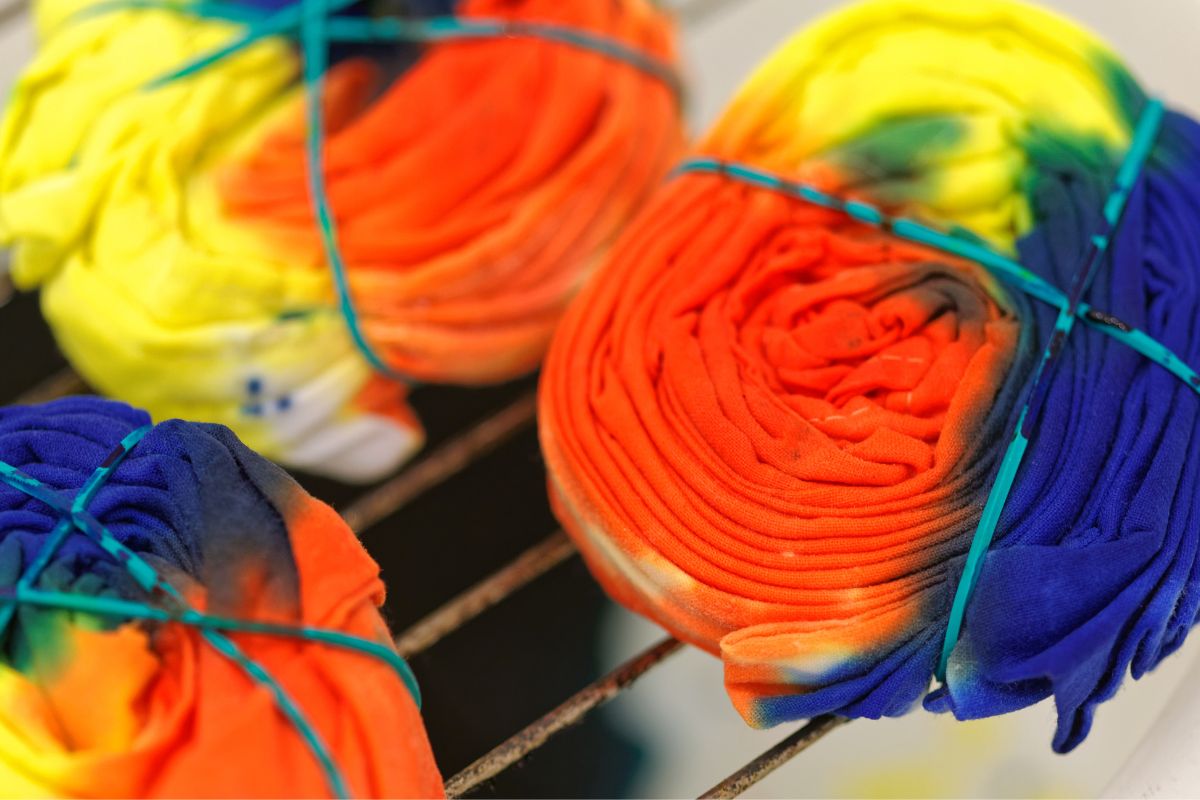
In advancing your tie-dye artistry, you will explore sophisticated color schemes and complex patterns to create striking designs that stand out.
Single-Color Designs
You might be surprised by the depth and variety single-color tie-dye designs can offer. By manipulating fabric folds and dye saturation, you can achieve variations of intensity that give a dynamic look to your piece. For example, using pastel shades of a single color can impart a subtle, sophisticated appearance.
Incorporating Tie Dye Patterns
Patterns like spirals and starbursts infuse energy into your tie-dye projects. These patterns require precise folding techniques and careful dye application. Even when working with primary and secondary colors, your folding method can significantly impact the final outcome, rendering unique twists on traditional patterns.
Exploring Color Relationships
Understanding color theory is critical for impressive tie-dye effects. Analogous colors—hues that are next to each other on the color wheel—create harmonious designs, while complementary colors, which are opposite, offer a vibrant contrast. For something more complex, consider using triadic colors, which are evenly spaced around the color wheel, for lively diversity.
Achieving Special Effects
For special effects, pre-soaking your fabric in soda ash can enhance the vibrancy of tie-dye colors like vermillion and black. Manipulating warm and cool hues separately can give the impression of depth and movement. When using premixed dyes, experiment with different dilutions and overlays to customize your shades, achieving everything from bold, saturated colors to soft transitions.
Finishing and Caring for Tie Dye
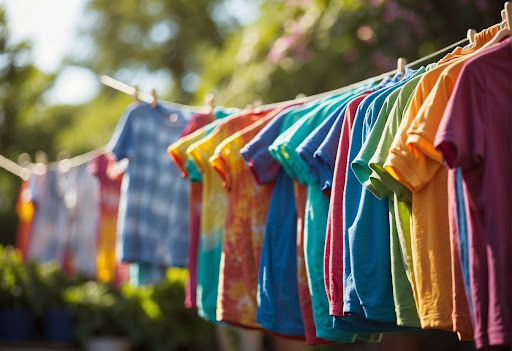
After you’ve unleashed your creativity on a tie-dye project, proper finishing and care are essential to ensure the longevity and brilliance of your fabric dye. This section will guide you through rinsing and washing techniques, how to maintain color vibrancy, and strategies to prolong the life of your dyed fabrics.
Rinsing and Washing Techniques
Begin by rinsing your tie-dye project in cold water until the runoff starts to clear. It’s important to remove excess dye without disturbing the vibrancy of your colors. Once the water is mostly clear, you can move onto washing. Use a mild detergent and wash separately for the first few washes to avoid dye transfer. Hand washing is ideal, but if you use a machine, opt for a gentle cycle.
- Initial rinse: Cold water until runoff clears.
- Washing: Mild detergent, separately, hand wash or gentle cycle.
Maintaining Color Vibrancy
To keep the colors of your tie-dye vibrant, incorporate vinegar into your rinsing process. A mixture of one part vinegar to four parts cold water works as a fixative that helps fiber-reactive dye bond with natural fibers. After initial rinsing, soak your tie-dye item in this solution for 30 minutes to an hour before the final wash.
- Soak: 1 part vinegar to 4 parts cold, soak 30-60 minutes.
Longevity of Dyed Fabrics
The lifespan of your tie-dye depends on the dye and fabric you choose. Fiber-reactive dyes are best for natural fibers like cotton, as they form a covalent bond with the fabric, making the colors last longer. Wash your tie-dyed items in cold water and dry them in the shade to prevent fading from the sun.
- Fabric choice: Use natural fibers for best results.
- Wash and dry: Cold water, shade dry to prevent fading.
Inspirational Ideas for Tie Dye Projects
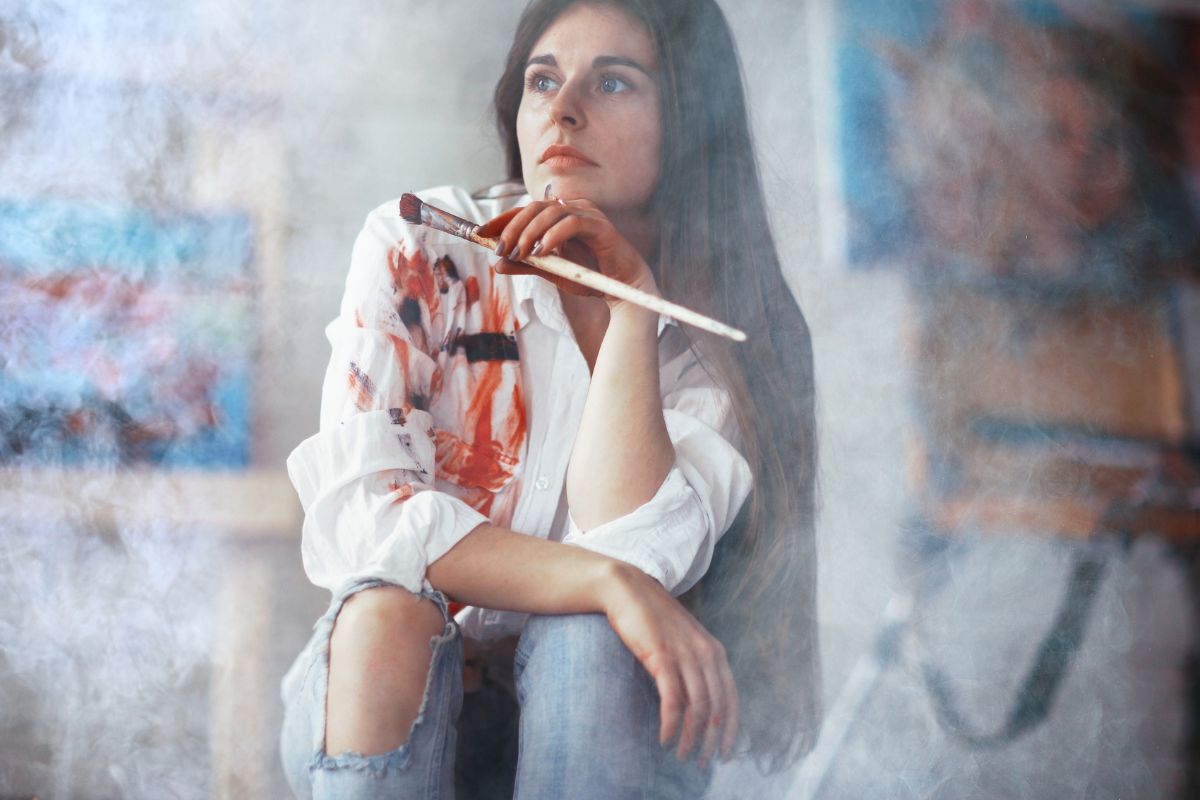
Embarking on a tie-dye project offers ample opportunities to express your creativity and individuality. With a variety of color combinations and techniques, you can transform simple fabrics into vibrant statements of art.
Seasonal Themes and Color Choices
When you’re planning to incorporate themes reflective of seasons into your tie-dye projects, consider the palette nature provides. For summer camp activities or projects that channel the warmth and vibrancy of the season, ROYGBIV (red, orange, yellow, green, blue, indigo, violet) color schemes echo the diversity and intensity of summer. Pastel shades work beautifully for spring, evoking a sense of renewal and softness. For autumn, earth tones like deep oranges, rich browns, and mustard yellows can capture the essence of fall foliage. Winter projects might employ cool blues, silvers, and purples to mimic frosty landscapes.
Tie Dye for Events and Gatherings
Tie-dye apparel and decorations can add a personal touch to special events or gatherings. Commemorate a family reunion with matching tie-dye shirts, using colors that represent your family’s heritage or personality. For fundraisers or awareness events, select colors that align with the cause – pink for breast cancer awareness, for example. Always remember that tie-dye is not just a fashion trend, it’s a means of uniting people and allowing their individuality to shine through a communal arts and crafts activity.
Innovative Approaches to Traditional Patterns
Challenge the status quo with innovative twists on traditional tie-dye patterns. The classic spiral pattern is a perennial favorite, but you can add uniqueness by incorporating elements inspired by Japan, such as Shibori, which is a series of intricate, detailed patterns. Do not limit yourself to the expected – experiment with folding techniques or color gradients to introduce a modern flair to your designs. Remember, personal expression thrives on experimentation, and each twist or tie brings you closer to a new, unprecedented work of art.
Frequently Asked Questions
Exploring the realm of tie dye requires understanding color theory, precise technique, and knowledge of effective color combinations. Here, address your curiosities with common inquiries and distilled guidance to enhance your tie dye experience.
What are the recommended color combinations for a tie dye beginner?
For novices, starting with primary colors (red, blue, yellow) is a great way to learn about color mixing. These can be combined to create secondary colors and offer a simple yet effective range of options.
Can you suggest some color pairings for a vibrant spiral tie dye pattern?
Pairing contrasting colors like blue and orange or purple and yellow can make your spiral pop. Utilize the color wheel to find complementary colors for a standout design.
What tie dye color mixes should be avoided to prevent muddy results?
To avoid muddy colors, do not mix complementary colors (opposite on the color wheel) directly, such as red with green, or blue with orange. These mixes quickly become dull and brown.
How can I achieve a perfect purple when mixing tie dye colors?
For an ideal purple, mix equal parts of true red and true blue. Adjust the ratio depending on whether you prefer a warmer (more red) or a cooler (more blue) shade.
Which tie dye products are known for providing the best results in color vibrancy and longevity?
Certain brands, like Jacquard’s Procion dyes, are highly regarded for their color vibrant and long-lasting results, favored by professionals and hobbyists alike.
Are there any specific tips for choosing tie dye colors when working with orange?
When working with orange, pair it with warm shades like red and yellow for a harmonious look, or with blue for a dynamic contrast. Be mindful of neighboring colors to avoid unwanted blending into brown.

